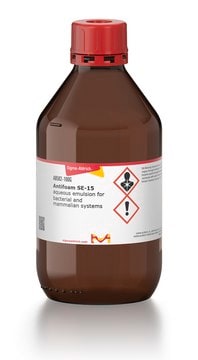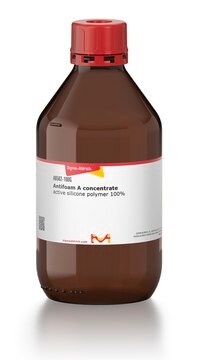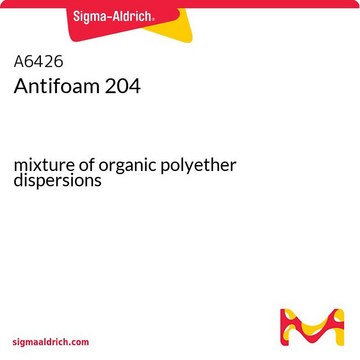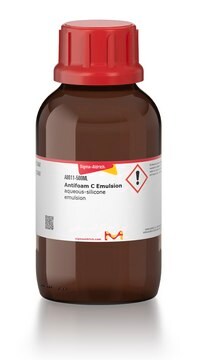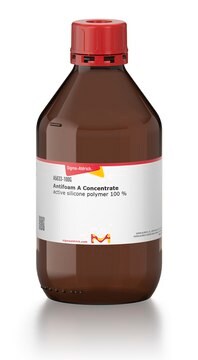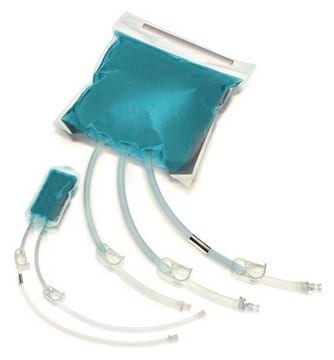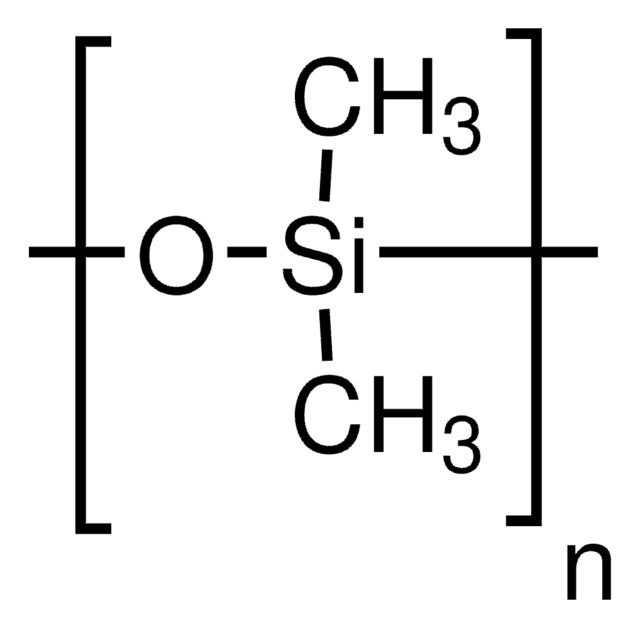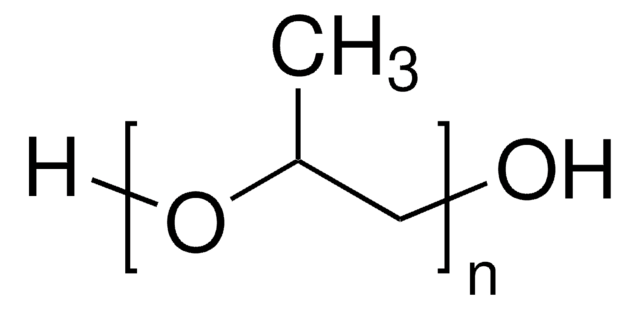A6457
Antifoam Y-30 Emulsion
aqueous emulsion for bacterial and mammalian systems
Sign Into View Organizational & Contract Pricing
All Photos(1)
About This Item
UNSPSC Code:
12352200
NACRES:
NA.85
Recommended Products
description
Molecular Biology Reagent
form
emulsion (aqueous)
concentration
30% (active silicon)
technique(s)
cell culture | hybridoma: suitable
density
1.0 g/mL at 25 °C
application(s)
microbiology
storage temp.
room temp
suitability
(Mammalian (suspension))
bacteria (fermentation)
General description
Antifoam Y-30 is a silicone-based product used to prevent or minimize foaming in both microbial fermentation systems and mammalian suspension cultures. Control of foaming minimizes damage to the cells, resulting in increased protein/antibody production.
Application
Suitable for preventing or minimizing foaming in microbial fermentation systems and mammalian suspension cultures.
Components
Antifoam Y-30 is an aqueous emulsion containing 30% active silicon and non-ionic emulsifiers .
Preparation Note
Antifoam Y-30 can be pre-diluted with 3-10 parts of cool water to aid in dispersion. Pre-diluted suspensions should be used immediately.
Storage Class Code
10 - Combustible liquids
WGK
WGK 3
Flash Point(F)
Not applicable
Flash Point(C)
Not applicable
Personal Protective Equipment
dust mask type N95 (US), Eyeshields, Gloves
Choose from one of the most recent versions:
Already Own This Product?
Find documentation for the products that you have recently purchased in the Document Library.
Customers Also Viewed
Sigma, BioFiles For Life Science Research: Detergents and Solubilization Reagenter
Sigma data, 3, 33-33 (2008)
Carmela M Smith et al.
Applied and environmental microbiology, 75(16), 5284-5289 (2009-06-30)
Dead-end ultrafiltration (DEUF) is an alternative approach to tangential-flow hollow-fiber ultrafiltration that can be readily employed under field conditions to recover microbes from water. The hydraulics of DEUF and microbe recovery for a new DEUF method were investigated using 100-liter
Vincent R Hill et al.
Applied and environmental microbiology, 73(13), 4218-4225 (2007-05-08)
Ultrafiltration (UF) is increasingly being recognized as a potentially effective procedure for concentrating and recovering microbes from large volumes of water and treated wastewater. Because of their very small pore sizes, UF membranes are capable of simultaneously concentrating viruses, bacteria
Bonnie Mull et al.
Applied and environmental microbiology, 75(11), 3593-3597 (2009-04-14)
Enterohemorrhagic Escherichia coli O157:H7 (EHEC O157:H7) outbreaks have revealed the need for improved analytical techniques for environmental samples. Ultrafiltration (UF) is increasingly recognized as an effective procedure for concentrating and recovering microbes from large volumes of water and treated wastewater.
Our team of scientists has experience in all areas of research including Life Science, Material Science, Chemical Synthesis, Chromatography, Analytical and many others.
Contact Technical Service